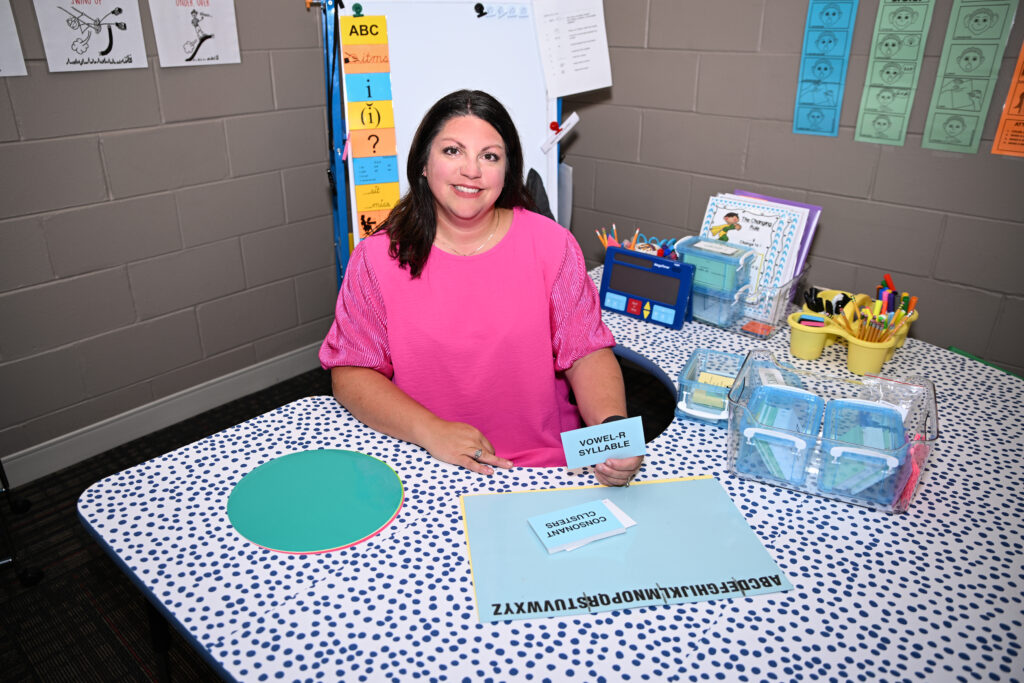
Story: Lisa Sollie | Photo: Cody Ingram
Dyslexia impacts approximately 15-20 percent of the population, or one in every five individuals, according to the International Dyslexia Association (IDA).
A new online degree at the University of West Alabama launching this fall will train dyslexia therapists to work with elementary students who struggle with dyslexia, which is considered the primary cause of reading, writing, and spelling challenges.
UWA will be the first institution in Alabama to offer the Master of Dyslexia Therapy degree program, a direct outcome of the Alabama Literacy Act (ALA), enacted on June 10, 2019, and amended in April 2022. This legislation takes a rigorous approach to teaching reading based on scientific principles and comprehensive, as well as intensive literacy assistance for all K-3 students, including those with dyslexia.
According to Dr. Jan Miller, dean of the College of Education (COE) at UWA, the ALA led the university to develop a degree program to address the future need for dyslexia therapists in the state. The goal of dyslexia therapy is to provide children with the tools they need to read at grade level, another critical component of the Literacy Act. Fully implemented in the 2023-24 school year, the ALA, Miller noted, states that third-grade students who cannot read at grade level on the Alabama Comprehensive Assessment Program (ACAP), an annual standardized test that measures how well students learn the Alabama academic standards, may be retained.
Miller researched successful dyslexia therapy programs in neighboring states that matched the criteria set by the COE. After her research, she identified William Carey University (WCU) in Hattiesburg, Mississippi, as having a program that aligned well with the college’s specifications regarding quality, curriculum, and approach to dyslexia therapy. “We wanted to pattern our new degree program after theirs, so we offered to put a few people through WCU’s program while we worked on ours,” she added. The first student, Sara Reynolds, coordinator of clinical experiences in UWA’s College of Education, will graduate this fall.
Reynolds, considered a dyslexia therapist-in-training, earned the program’s required 720 clinical hours by conducting one-hour therapy sessions with K-3 students at the University Charter School over the past two years. This hands-on experience is a foundational model for future students enrolled in UWA’s Master of Dyslexia Therapy program who will begin their journey as dyslexia therapists-in-training this fall in elementary schools throughout the state.
Dyslexia, as defined by the Alabama Literacy Act, is a learning challenge or disability that is neurological in origin and characterized by difficulties with accurate or fluent word recognition and poor spelling and decoding abilities. Since dyslexia is a neurological disorder, Reynolds is not teaching her students new material, “I’m just teaching it in a new way designed to rewire their brains.”
Reynolds uses Neuhaus’s Concepts in Literacy, a structured literacy curriculum that is strategic, systematic, sequential, and comprehensive in her therapy sessions. “Structure and repetition,” she explained, “help students focus on the concept they are trying to learn, how it applies, and how they will use it.” Based on the Orton-Gillingham approach, the curriculum uses multisensory activities to teach phonological awareness, decoding, spelling, writing, and comprehension. UWA will use Neuhaus for therapy and intervention in its new program, one of three dyslexia therapy curriculums approved by the Alabama State Department of Education.
Testing for dyslexia and private therapy is often cost-prohibitive for most families, as noted by Reynolds. “However, with permission from their parents, dyslexia therapists-in-training can screen identified students at school. If students don’t pass the benchmarks, we know they will be good candidates for dyslexia therapy,” she added.
Screening usually occurs in the spring for students in kindergarten or the fall for first-grade students. This timetable, she noted, lets her start working with students by the second semester of first grade and continue to work with them through the third grade “so they are prepared and on reading level by the time they take the ACAP exam.”
Dyslexia therapy is working, and although Reynolds is encouraged by the growth she’s seeing in the therapy sessions, she’s particularly excited about what’s happening in the classroom.
“Teachers regularly show me where their students were before they started therapy and where they are now, and it’s evident this curriculum and the techniques work,” she insists. “Students are using the tools and rules they’ve learned to be successful in the classroom.”
For more information about UWA’s Master of Dyslexia Therapy degree program, visit: https://online.uwa.edu/online-degrees/med-master-education-degree-dyslexia-therapy/